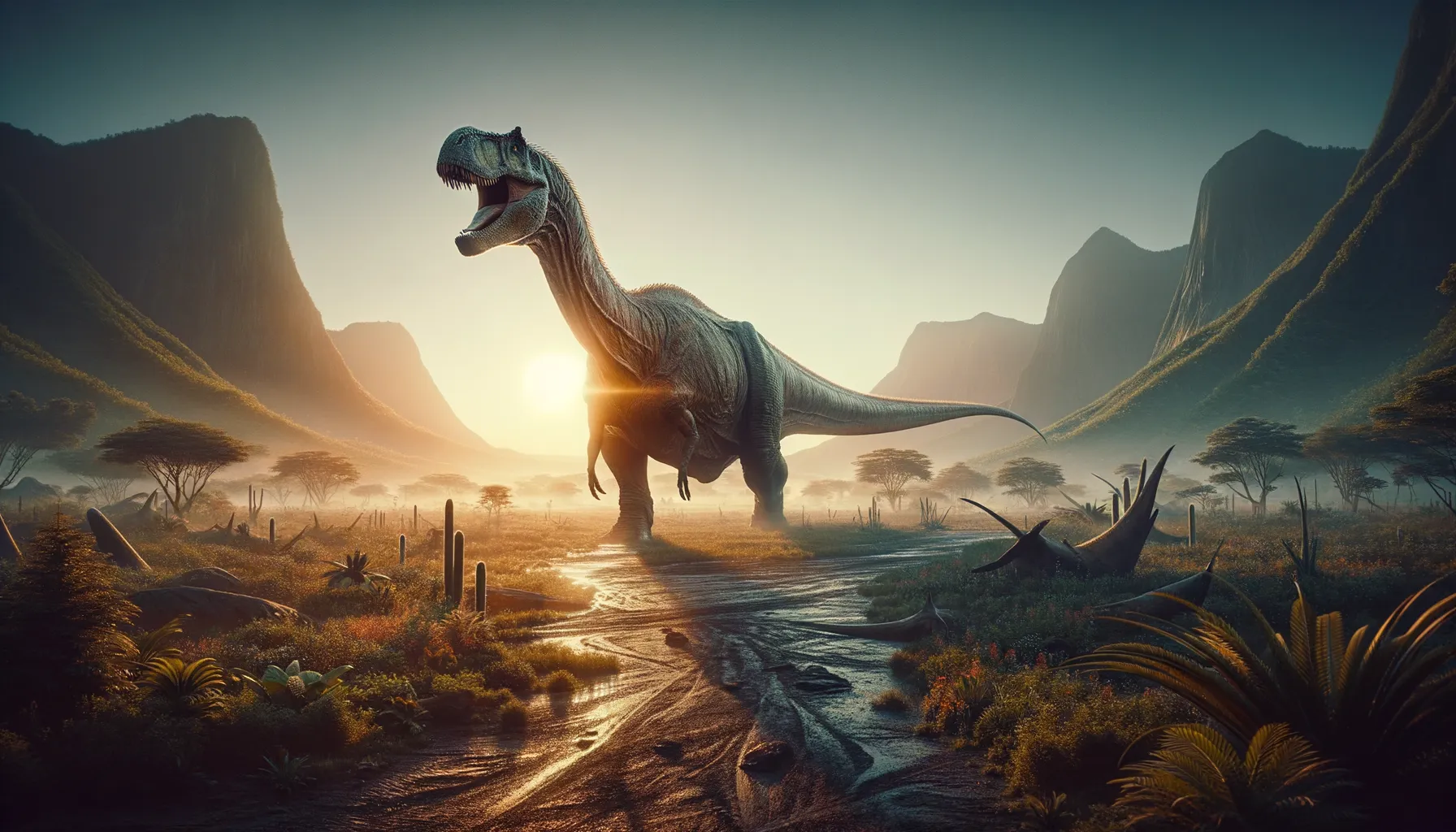
Atlantosaurus
Unveiling giants of the Jurassic Earth.
Period
Jurassic
Length
Approximately 20 meters long.
Height
Could reach up to 9 meters tall.
Weight
Estimated up to 30 tons.
Atlantosaurus was a gigantic dinosaur that roamed the Earth during the Late Jurassic period. Known for its massive size, it was part of the sauropod family and featured a long neck and tail. Its discovery in North America contributed to our understanding of dinosaur size and diversity. Often overshadowed by more famous relatives, its importance lies in unveiling the variety within sauropod dinosaurs during its time.
Diet
Atlantosaurus was herbivorous, feeding on vegetation available during the Jurassic period. It likely consumed large amounts of foliage to sustain its enormous size.
Hunting
As a herbivore, Atlantosaurus did not hunt other animals. Its daily quest revolved around finding sufficient plant matter to eat.
Environmental challenges
Atlantosaurus faced challenges such as finding enough food to sustain its bulk. The changing climate during the Jurassic could have affected the availability of its food sources. Predators also posed a threat to its young, as adults were generally too large to be attacked. Water sources were essential, and during dry spells, access might have been a challenge.
Speed
Likely slow paced due to its massive size.
Lifespan
Estimated to live several decades.
First discovery
First discovered in the 19th century in North America.
Fun Facts
- Atlantosaurus was one of the earliest sauropods discovered in North America, making it quite famous in the 19th century.
- Its name 'Atlantosaurus' means 'Atlas Lizard,' a nod to its massive size, akin to the Greek god Atlas who held up the sky.
- Atlantosaurus lived during the Late Jurassic period, which is around 150 million years ago.
- Fossils of Atlantosaurus have been found in the Morrison Formation, a famous dinosaur fossil site in the western United States.
- There has been some debate among paleontologists about whether Atlantosaurus is a distinct genus or if it should be classified with other similar sauropods.
- Atlantosaurus is believed to have been a herbivore, feasting on the lush vegetation that existed during its time.
- The discovery of Atlantosaurus helped pioneer the study of sauropods, sparking intrigue and more extensive research into these long-necked giants.
Growth and Development
Atlantosaurus hatched from eggs, and juveniles rapidly grew to reduce vulnerability to predators. Growth involved substantial increases in bone mass to support its size. Over time, it developed the long neck and tail that characterized its adult form. Its growth rate is believed to have been among the fastest of the dinosaurs.
Habitat
Atlantosaurus inhabited vast floodplains and open woodlands, which provided ample food resources. It preferred areas where it could range freely with little competition. The proximity to water sources was crucial for hydration and possibly nesting.
Interaction with other species
Atlantosaurus lived alongside other herbivorous dinosaurs, competing for food. Its size offered protection, but predators like Allosaurus might have targeted its young. It might have engaged in mutualistic relationships with smaller animals that removed parasites.
Natural lifespan
Atlantosaurus likely lived up to 70 years in the wild.
Reproduction
Atlantosaurus reproduced by laying eggs, with several laid at once to increase survival chances. It is believed females may have nested in communal areas. Parental care, if any, was likely limited post-hatching.
Social behaviour
Atlantosaurus might have moved in herds for protection against predators. Social structures could have involved loose aggregations rather than tight-knit groups. Communication was likely minimal and reliant on body language rather than vocalizations.
Fossil locations
Fossils of Atlantosaurus have been found primarily in parts of the western United States. This includes regions like Colorado, which are rich in Late Jurassic sediments. These sites have provided insights into its physical attributes and living environment. Fossil discoveries continue to help refine its classification and evolutionary history.
